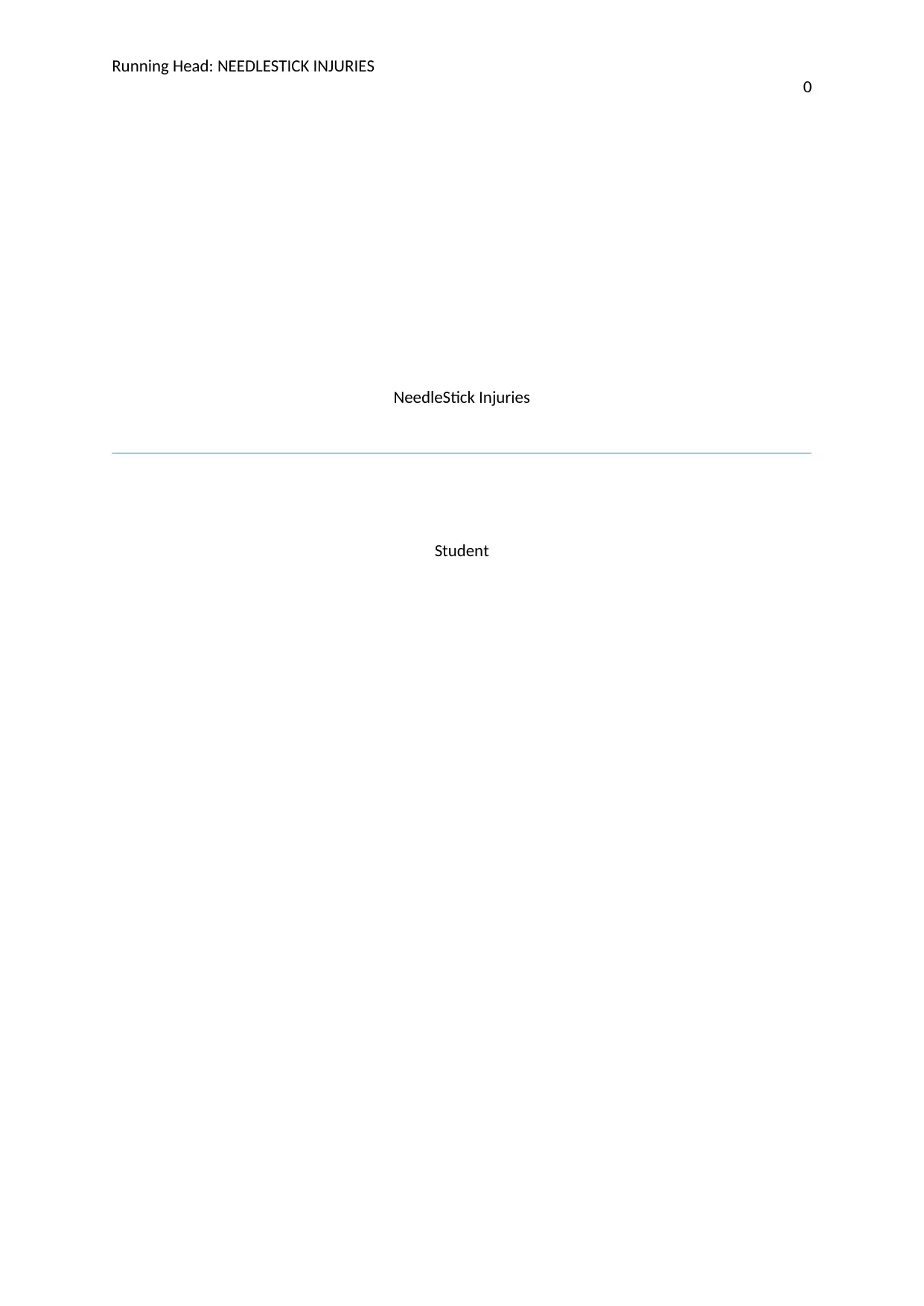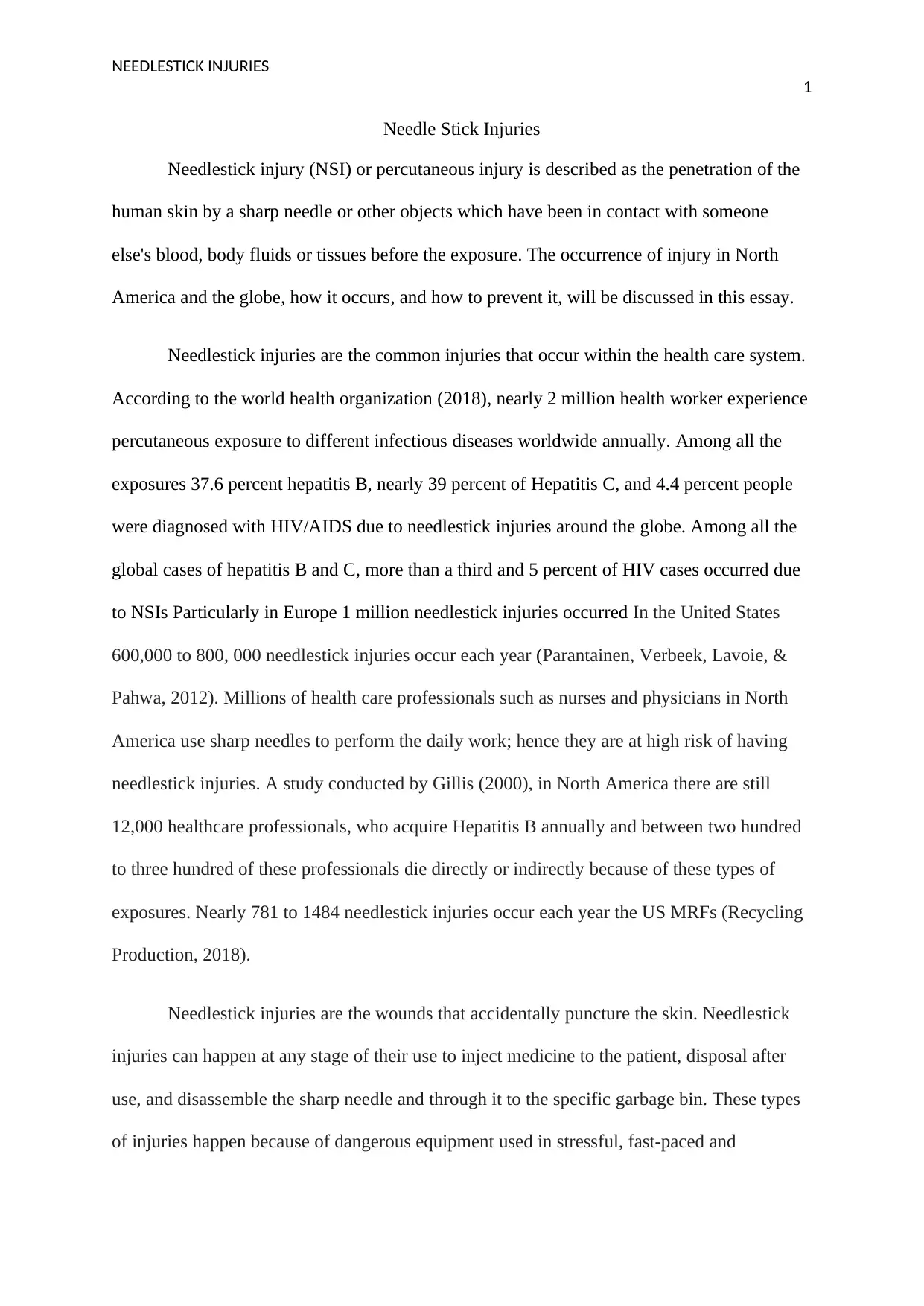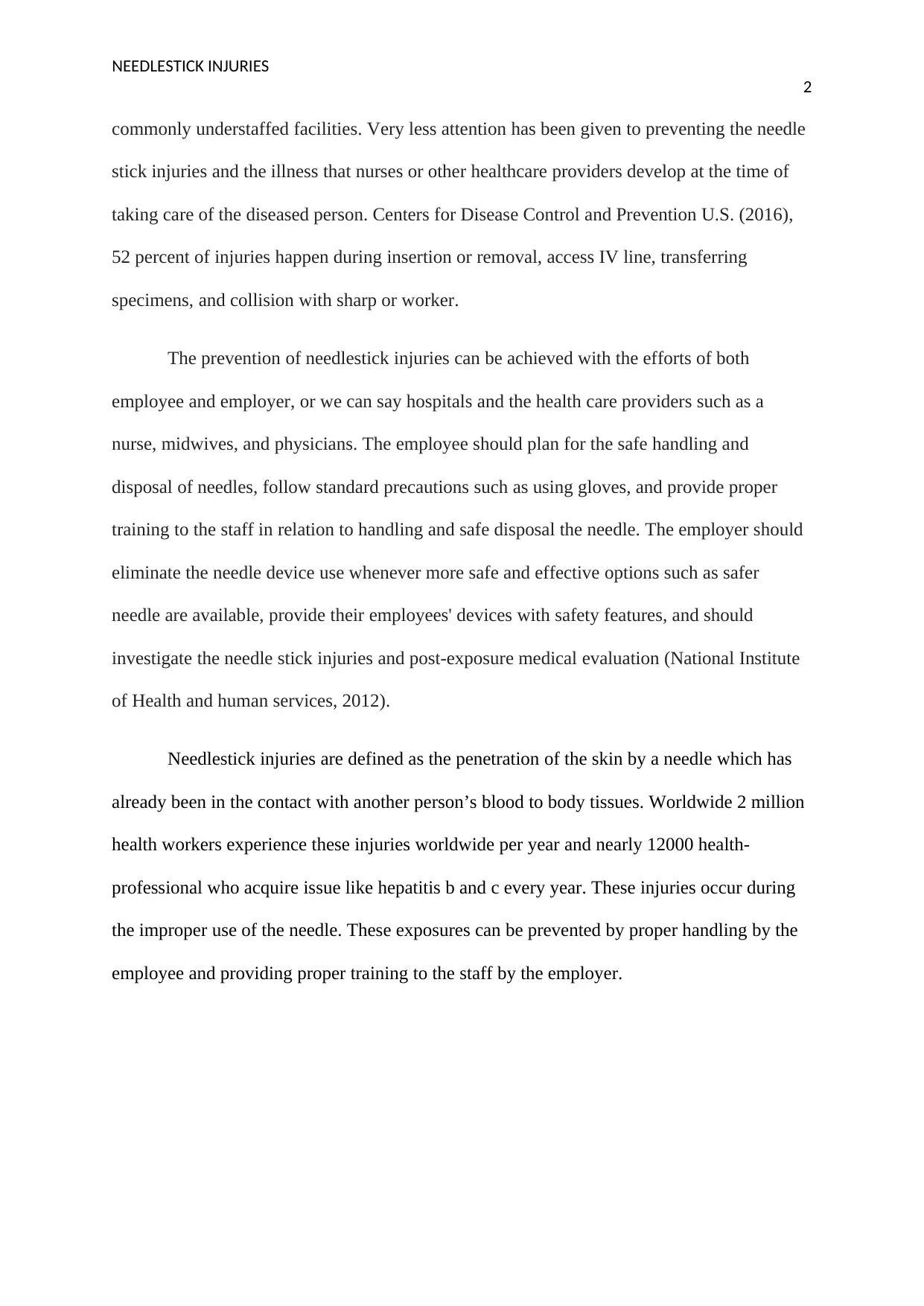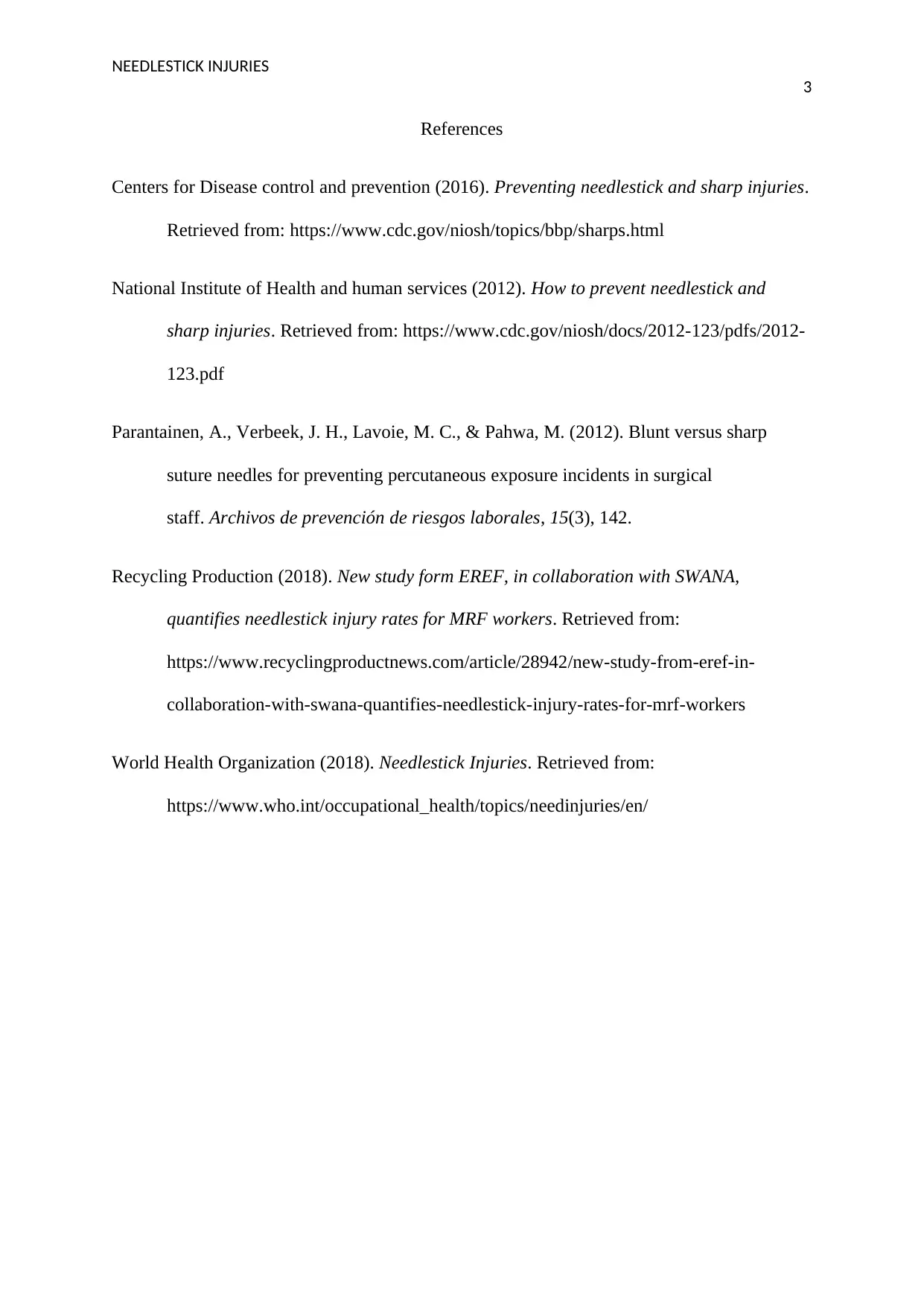Analysis of Needlestick Injuries: Causes, Prevention, and Impact
VerifiedAdded on 2023/06/03
|4
|814
|493
Essay
AI Summary
This essay provides a comprehensive overview of needlestick injuries (NSIs), also known as percutaneous injuries, focusing on their occurrence in North America and globally, as well as strategies for prevention. The essay highlights the prevalence of NSIs within the healthcare system, citing statistics from the World Health Organization (WHO) indicating millions of healthcare workers experience such injuries annually, leading to potential exposure to infectious diseases like Hepatitis B, Hepatitis C, and HIV/AIDS. It details the various stages at which NSIs can occur, from injection to disposal, and emphasizes the role of both healthcare providers and institutions in implementing preventive measures. These measures include safe handling and disposal of needles, the use of safety devices, and proper training for staff. The essay underscores the importance of eliminating unsafe needle devices and investigating NSIs to ensure a safer healthcare environment. References to the CDC, NIH, and WHO are included to support the information.
1 out of 4











![[object Object]](/_next/static/media/star-bottom.7253800d.svg)